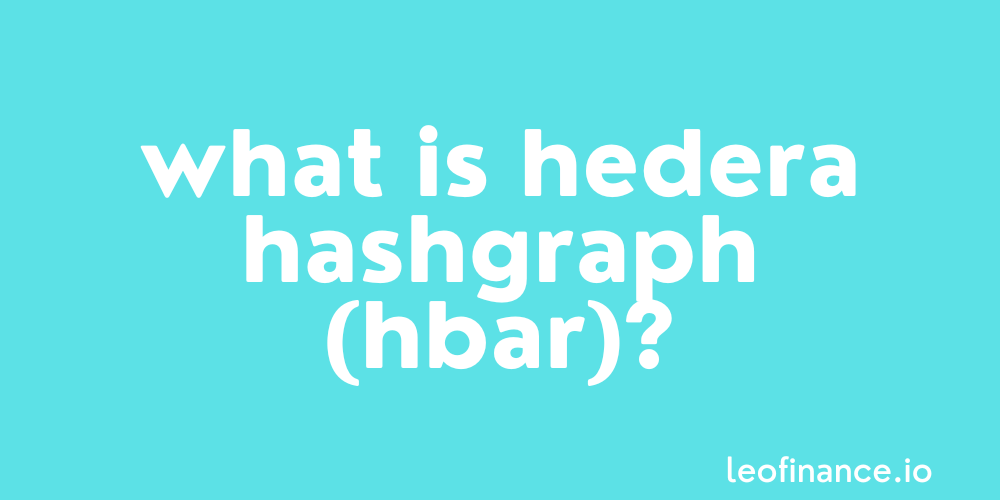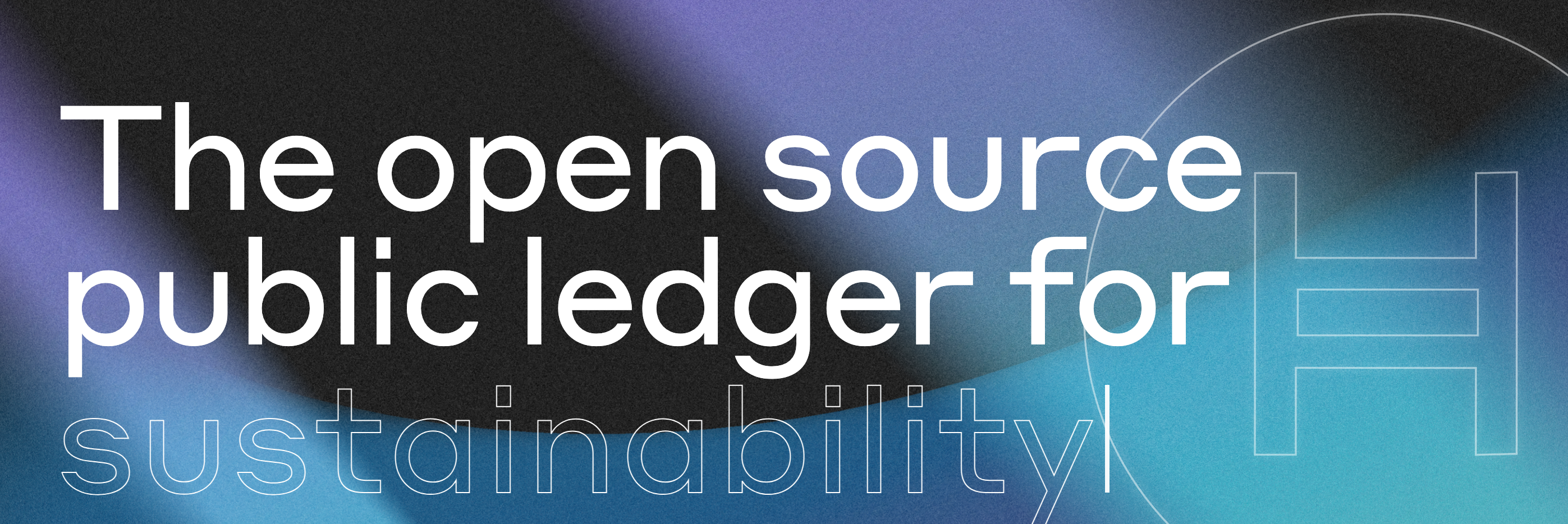
A beginner's guide to Hedera Hashgraph, the fast and secure alternative to blockchain that is governed by a council of 39 leading organisations such as IBM, Google and Boeing.
Hedera Hashgraph is a distributed ledger technology that presents itself as a faster and more secure alternative to blockchain.
It uses the patented hashgraph technology, which is used by the public ledger Hedera.
Unlike blockchains, hashgraphs do not bundle data into blocks or use miners to validate transactions.

Instead, individual nodes on the network create directed acyclic graphs that time-sequence transactions, allowing for faster verification of transactions as more are added to the network.
Essentially, hashgraph is not built on a chain of blocks but rather operates like a graph.
In this Hedera Hashgraph guide, we'll delve into the details of this unique distributed ledger technology that operates as an open source, public network governed by leading organisations from around the world.
Introduction to Hedera
Hedera Hashgraph is developed by a company of the same name, Hedera and it is the only public distributed ledger based on the Hashgraph algorithm.
The platform was launched in 2018 by Dr. Leemon Baird and Mance Harmon, who are the co-founders of the technology.
The platform is governed by the Hedera Governing Council, which is composed of 39 leading organisations from various industries such as:
- IBM
- Boeing (among others)
One of the unique features of Hedera Hashgraph is its patented consensus algorithm, which allows for fast and secure transactions without relying on miners.
Instead, individual nodes on the network work together to confirm transactions and create a time-stamped record of them.
Hedera also supports smart contracts, which enable developers to build decentralised applications on top of the platform.
If the team can get things right, Hedera Hashgraph is an innovative project that has the potential to disrupt various industries.
All while paving the way for a more efficient and secure digital future.
How does Hedera work?
At its core, Hedera Hashgraph is a distributed ledger technology that uses a consensus algorithm called the Hashgraph to verify transactions on its network.
Unlike blockchains, which use miners to validate transactions then bundles them into blocks, Hedera Hashgraph relies on individual nodes on the network to confirm transactions and create a time-stamped record of them.
Here's how it works.
Every time a transaction is made on the Hedera network, it is sent to a group of nodes called the "gossip about gossip" group.
This group then shares the transaction with other nodes on the network and each node creates a virtual vote that includes the transaction and the order in which it was received.
These votes are then shared with other nodes and the process repeats until a consensus is reached.
One of the key advantages of the Hashgraph consensus algorithm is that it is fast and secure.
Because transactions can be confirmed by multiple nodes simultaneously, the network can process transactions at a much higher speed than traditional blockchains.
Additionally, because nodes are incentivised to behave honestly through a reputation system, the network is resistant to attacks and manipulation.
In addition to its consensus algorithm, Hedera Hashgraph also supports smart contracts, which are self-executing contracts with the terms of the agreement written into code.
Smart contracts allow developers to create decentralised applications on top of the Hedera network, enabling a wide range of use cases, from digital identity to supply chain management.
Ultimately, Hedera Hashgraph's innovative consensus algorithm and support for smart contracts make it a promising platform for the future of decentralised applications.
What is HBAR crypto used for?
HBAR is the native cryptocurrency of the Hedera network.
As such, it plays a critical role in the network's operation and governance.
Here are some of the key uses of HBAR:
Transaction Fees
Like other cryptocurrencies, HBAR is used to pay transaction fees on the Hedera network.
When a user sends a transaction on the network, they must include a small amount of HBAR to pay for the computational resources used to process the transaction.
Network Governance
HBAR is used to govern the Hedera network.
Holders of HBAR can participate in network governance by staking their coins and participating in community decision-making processes.
This gives them a say in important matters such as network upgrades, changes to transaction fees and the addition of new features to the platform.
Distributed Applications
HBAR is also used to power distributed applications built on the Hedera network.
Developers can use HBAR to pay for network resources needed to build and deploy their applications.
As you can see, HBAR crypto itself serves as a crucial component of the Hedera ecosystem.
Facilitating transactions, governance and the growth of the network.
Hedera pros and cons
Here are some of the more obvious, potential pros and cons of Hedera Hashgraph.
Pros
- Speed: Transactions on the Hedera network are processed quickly, making it an ideal choice for time-sensitive applications.
- Security: The Hashgraph algorithm used by Hedera is considered to be more secure than blockchain technology.
- Energy efficiency: Hedera's consensus mechanism does not require miners to solve complex mathematical problems, making it more energy-efficient than traditional blockchain networks.
- Governance: Hedera's governance structure is designed to ensure that the network is not controlled by any single entity, making it more decentralised than other blockchain networks.
- Industry partnerships: Hedera has formed partnerships with major companies, such as Google and IBM, which could help to drive adoption of the network.
Cons
- Patented technology: The Hashgraph technology used by Hedera is patented, which could limit the ability of other developers to build on the network.
- Centralisation: While Hedera's governance structure is designed to be decentralised, some critics argue that the network is still too centralised.
- Limited adoption: While Hedera has formed partnerships with major companies, adoption of the network is still limited compared to other blockchain networks.
- Competition: There are many other blockchain and distributed ledger technologies on the market, which could make it difficult for Hedera to gain traction.
- Complexity: The Hedera network is complex, which could make it difficult for developers and users to understand and use effectively.
Do the pros outweigh the cons?
As with any technology, there are pros and cons to using Hedera Hashgraph.
Many users find the benefits of using Hedera Hashgraph to be compelling.
The speed and efficiency of the network, as well as its low transaction fees, make it an attractive option for those who need to process large volumes of transactions.
Additionally, the network's governance structure, which includes some of the world's leading organisations, provides a level of legitimacy and trustworthiness that is unmatched by many other distributed ledger technologies.
On the other hand, some users may be put off by the fact that Hedera Hashgraph is not fully decentralised, as it relies on a small group of governing council members to make decisions about the network.
Additionally, the fact that the technology is patented means that it is not open source and may not be as transparent as other distributed ledger technologies.
Finally, while the network's transaction fees are low, they can still add up over time, especially for users who need to process a high volume of transactions.
Ultimately, the pros and cons of Hedera Hashgraph will vary depending on an individual's needs and priorities.
What is the difference between hashgraph, blockchain and tangle?
Let’s take a look at the difference between each.
Hashgraph
Hashgraph is a distributed ledger technology that is used as an alternative to blockchain.
Unlike blockchain, it does not use miners to validate transactions or bundle data into blocks.
Instead, it uses individual nodes on the network to create directed acyclic graphs that time-sequence transactions.
The nodes use a consensus algorithm to agree on the order of transactions and ensure their integrity.
Blockchain
Blockchain is a distributed ledger technology that uses blocks to store transaction data.
Each block contains a list of transactions and a cryptographic hash of the previous block, creating a chain of blocks that cannot be tampered with.
Miners on the network compete to solve cryptographic puzzles to validate transactions and add new blocks to the chain.
Tangle
Tangle is a distributed ledger technology used by IOTA crypto.
It is based on a directed acyclic graph (DAG) and is used to validate and confirm transactions on the network.
Unlike hashgraph and blockchain, there are no miners or validators.
Instead, every transaction on the network must validate two previous transactions before being validated itself.
This allows the network to scale more easily and eliminates the need for transaction fees.
Which technology is best?
It's difficult to say which technology is best as it largely depends on the specific use case and requirements.
Hashgraph's speed and security features make it a good choice for applications that require high transaction throughput and strong security guarantees.
Blockchain's immutability and decentralisation are important features for use cases such as digital identity, supply chain management, and asset tracking.
Tangle's unique structure and lack of fees make it well-suited for applications that require micropayments and internet of things (IoT) devices.
Ultimately, the choice of technology should be based on the specific needs of the project and how well the technology can meet those needs.
Should I buy Hedera (HBAR) crypto in 2023?
Hedera Hashgraph is an exciting and innovative technology that offers some unique benefits over traditional blockchain-based cryptocurrencies.
Its speed, scalability and security features make it a compelling option for enterprise use cases.
However, it's important to consider whether it adheres to the core principles of what cryptocurrency is all about: decentralised, permissionless money.
One of the main critiques of Hedera Hashgraph is that it's not truly decentralised.
The network is governed by a council of large corporations, which raises questions about whether it's truly an open, permissionless system.
In contrast to true decentralised cryptocurrencies like Bitcoin (BTC), where anyone can participate in the network and contribute to its security, Hedera Hashgraph's governance structure is more akin to a company.
While Hedera Hashgraph is an impressive technology, it's important to recognise that it's not a true cryptocurrency in the sense that it's not a decentralised, permissionless network.
Therefore, if your goal is to support and use decentralised, permissionless money, you might want to consider other options.
On the other hand, if you're interested in the specific use cases that Hedera Hashgraph targets and you're comfortable with its governance model, it might be worth considering investing in HBAR crypto.
Put bluntly, while Hedera Hashgraph's technology may be impressive, its corporate governance structure and lack of decentralisation make it a less attractive investment option for those seeking the true spirit of cryptocurrency.
LeoFinance Crypto Guides.
Why not leave a comment below and share your thoughts on our guide to Hedera Hashgraph (HBAR)? All comments that add something to the discussion will be upvoted.
This Hedera (HBAR) guide is exclusive to leofinance.io.
Posted Using LeoFinance Beta